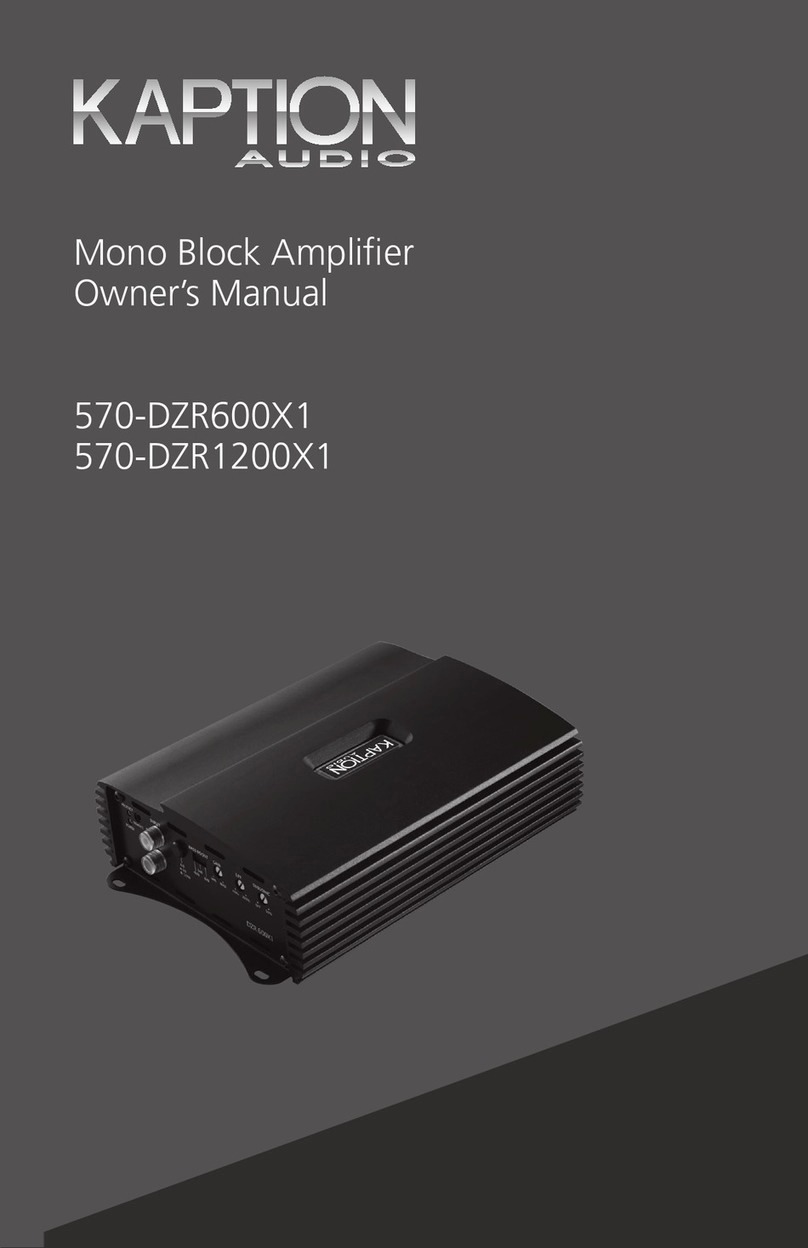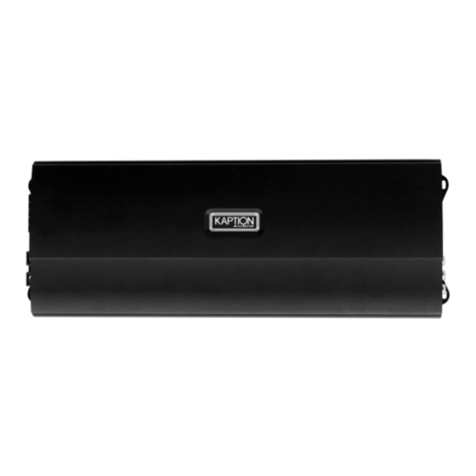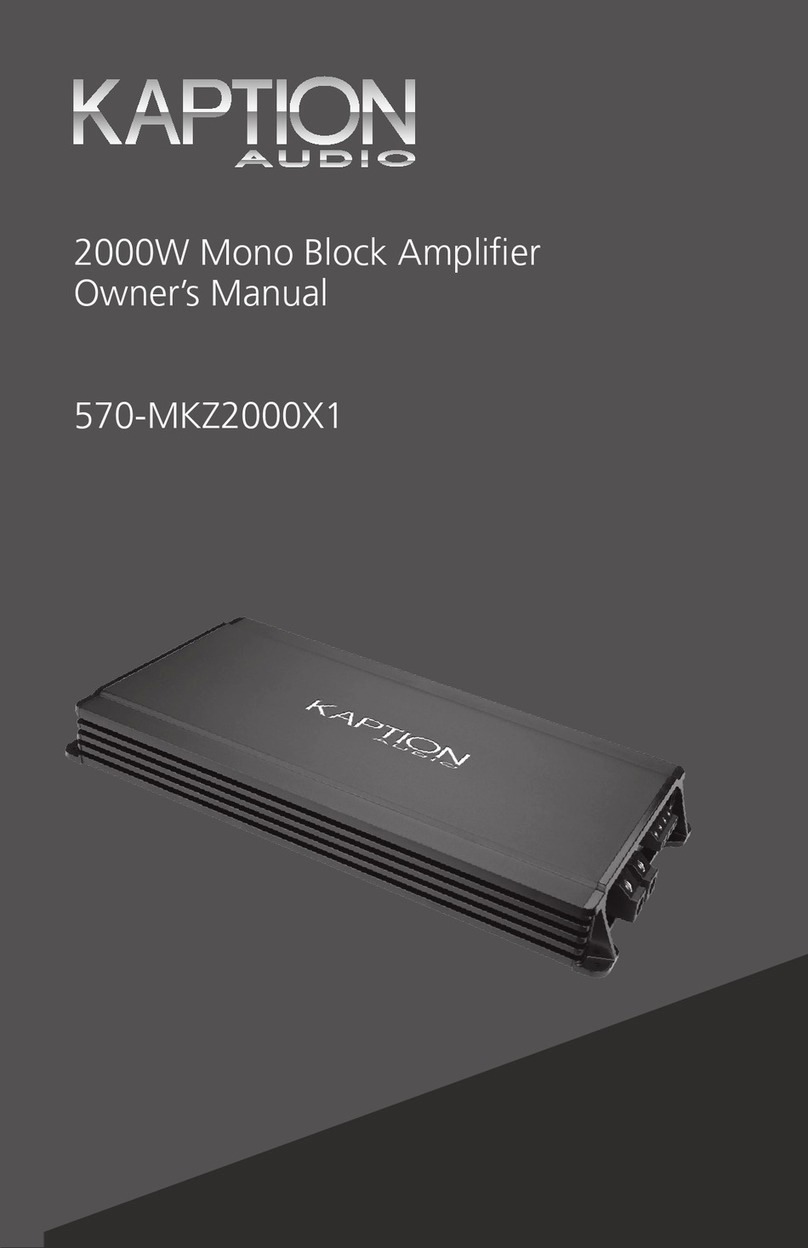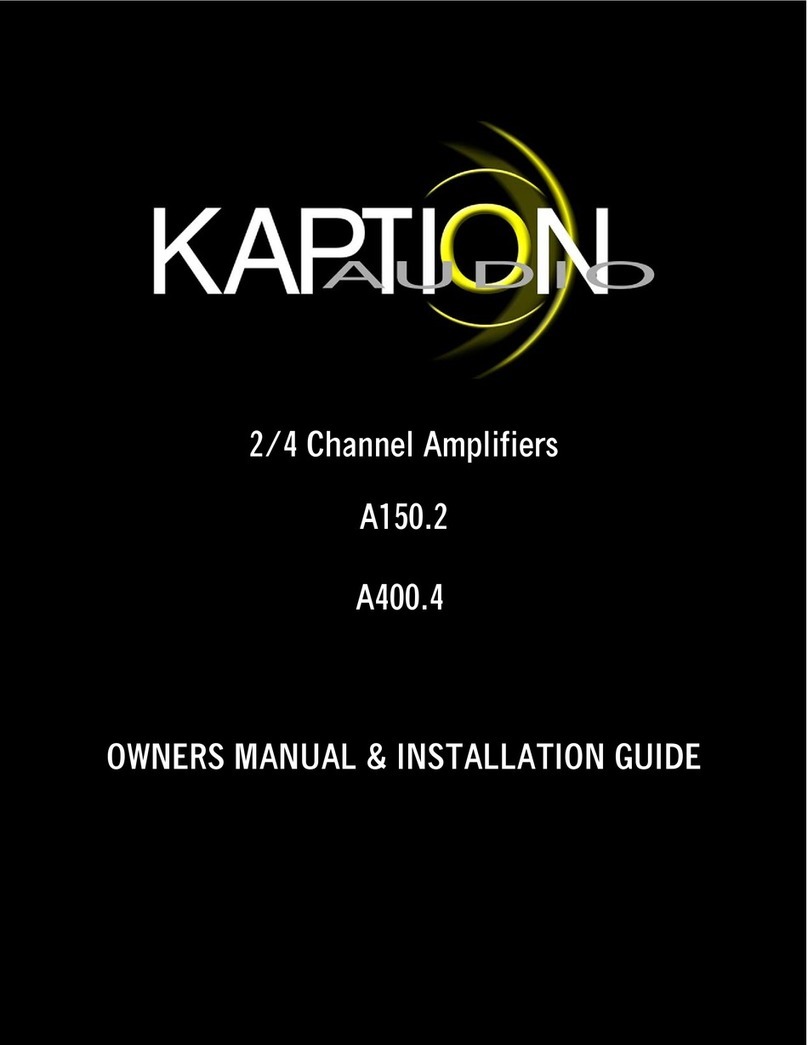4
2. Speaker Wire Connections- When installing the speaker wires, please take proper measures to
protect them. For example, when connecting the door speakers, the speaker wire should run from
the amplifier's output terminals, under the carpet, and through the factory rubber boot loom
t hat protects the wires in the inner door jam. If the factory boot cannot be used, take other
measures to protect these wires. Sometimes the door has to be completely removed to use the
factory boot. If this is something that you do not feel comfortable doing, please ask a professional
to help you.
These amps will have two PARALLEL speaker terminals, a positive and negative for a single woofer
and an OPTIONAL second set of positive and negative terminals for a two woofer configuration.
These amps can drive a minimum of a 2 ohm load.
3. Power Terminals- Please take proper measures during installation to protect the power wires as
best you can. For example, when running the power cable from the vehicle's battery through the
firewall, use a firewall bushing for protection. Run the power wire through the interior of the
vehicle, under the carpet, and to the amplifier. If this is something that you do not feel
comfortable doing, please ask a professional to help you. Be sure to lay the power wire away
from all signal cables.
· +12V: This is the main power input for the amplifier and must be connected directly to the
positive terminal of the car battery for the amplifier to operate properly. It is important that a
main fuse is installed a maximum of 18" from the battery.
· GND: This is the ground connection for the amplifier and must be connected directly to the
metal chassis of the vehicle for the amplifier to operate properly. A properly grounded amplifier
can be run harder and longer than a poorly grounded amplifier. The ground on the amplifier
should be as short as possible and be connected directly to the vehicle's metal chassis. Do not
connect to factory bolts of ANY kind. When attaching the ground to the chassis, sand all the
paint away from the contact point. A grounding block like the Street Wires GT4 should be used
whenever possible as this piece of equipment has 5 times the surface area of a normal screw.
The gauge of the power and ground wire is often an overlooked aspect of amplifier installation. The
more power the amplifier receives, the more power it will produce. Power cables have a natural
resistance, and will lose voltage by the time the power makes its way to the amplifier. The large
gauge diameter wire will hold more voltage over longer runs. Also, by having a larger diameter
ground wire, the amplifier can run more efficiently. It recommends using a minimum of 4 gauge
power and ground cables to get the best performance.
· REM: This connection turns the amplifier on and off and needs to be connected to a remote
turn-on wire from your source unit if you are using a low level input connection.
Note: When numerous amplifiers ate used in the same system, look into using a relay with a
separate power wire connected to an alternative power source to take the strain off the source unit.
Normal source units can only keep a constant 12 volts to 2 or possibly 3 amps. This wire should
also be run away from the RCA cables.
Double check all the previous connection installation steps, in particular the speaker and power
wiring. Securely mount the amplifier. If everything is in order, reconnect the vehicle's negative
battery connection and begin following the Feature Setup and Adjustments steps.
11
FEATURE SETUP AND ADJUSTMENTS
1. Adjusting the Gain Control Before you start setting your amp gains, be sure to defeat all EQs
Ў"off " position.. You want to set the gain levels properly BEFORE applying any equalization.
Start with the source unit's volume around of the way up, and the gain on the amp all the way
down counter-clockwise. Slowly increase the gain clockwise until the speaker starts to distort.
Immediately decrease gain until the distortion goes away. This will be a good reference point on the
volume control to where the signal starts to distort. Remember every CD will be different; use
common sense and constantly listen for obvious distortion and adjust volume accordingly. The gain
on the amp has nothing to do with how much power the amp can produce, just how fast the amp
puts out max power. Just like in an automobile, full throttle is very rarely needed.
34
Note: When adjusting the gains for two amplifiers strapped, you must adjust each amplifier's gain,
frequency, and EQ so you will be able to ЎmatchЎ the two amps and ensure both amplifiers are
sending the same ac voltage to the woofer. This will require source materials that include test tones
and a volt ohm/multi meter.
a) Set the volume around half, play a flat tone 60-80 Hz through your head unit and hit repeat.
Use this same frequency and volume for the entire process.
b) Set your multi meter on ac voltage and connect it to the Positive amplifier's positive and negative
output terminals.
c) Switch the multi meter between the amps and make the necessary adjustments so that the flat
tones produced match. If you have access to two multi meters, simply place one on each amplifier's
terminals and make the adjustments.
2. Adjusting the LPF- In some applications, the bass amplifier needs some help
in boosting or cutting certain frequencies. A parametric equalizer is distinguished from a
conventional equalizer circuit in that it allows the user to control the level of the boost or cut as
well as the center frequency and the bandwidth of the boost or cut the range of frequencies
affected..
The following steps describe what each of the three controls of the parametric Bass EQ do in
isolation. It is important to understand these behaviors, because the must all be considered when
setting up the EQ.
4. Setting the Frequency: Begin listening for the loudest musical spot or range within the bass
range of your sound system. Adjust the center frequency to match this point. For most systems,
the best center frequency adjustment will be between 40-50Hz.Use 45Hz 12 o'clock setting
as a starting point and adjust up or down gradually.
3. Adjusting the HPF- HPF is used for removing sub base frequencies from the smaller speakers
when a subwoofer is. installed in the system. Set filter switch to “HPF”. Adjust variable crossover
frequency with control as desired. The amplifier input circuit filters out everything above 50-1KHZ
(dependent on the adjustment of the frequency control), so only the deepest bass notes are amplified.































